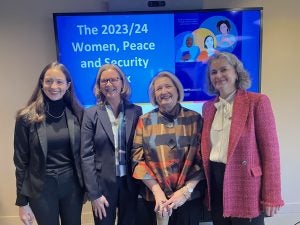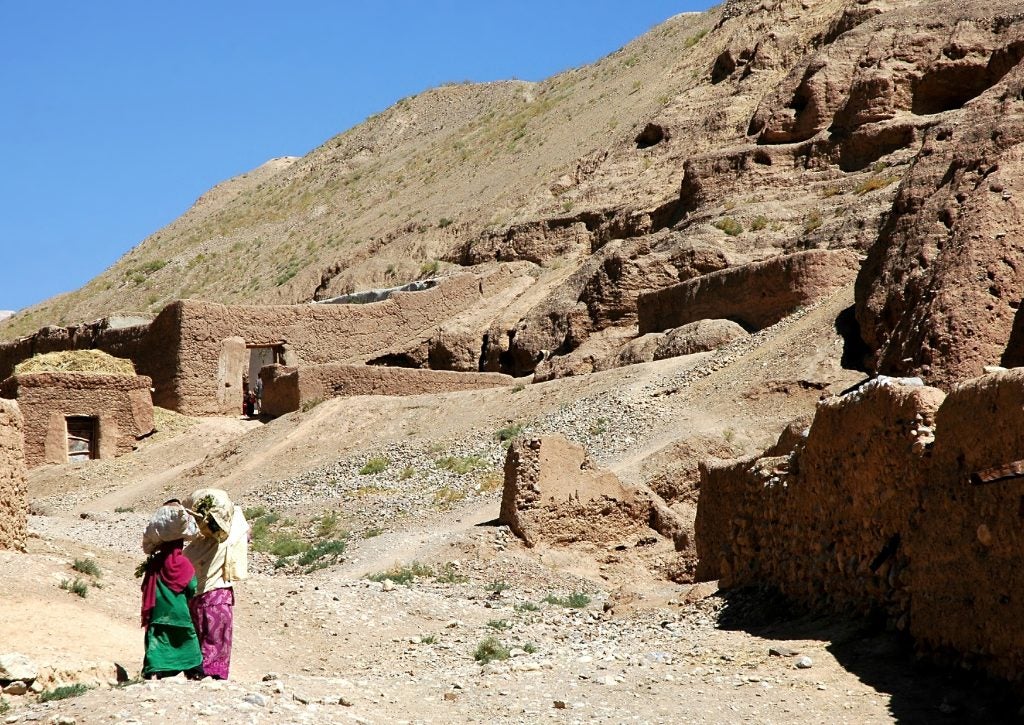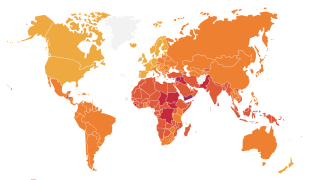Denmark is the top country in the world to be a woman, according to the 2023 Women, Peace and Security (WPS) Index, which was launched today at the Norwegian Mission to the United Nations in New York.
The country scores more than three times higher than Afghanistan, which ranked the lowest on the index.
The WPS Index, published by Georgetown University’s Institute for Women, Peace and Security (GIWPS) and the Peace Research Institute Oslo (PRIO), draws on recognized data sources to measure women’s inclusion, justice and security in 177 countries.
Denmark, Switzerland, Sweden, Finland and Luxembourg led the rankings on the top countries for women. Afghanistan, Yemen and the Central African Republic ranked among the lowest.
“Countries where women are doing well are more prosperous, peaceful, democratic and better prepared to respond to the impacts of climate change,” said Elena Ortiz (SFS’21), a Georgetown alumna who is the lead author on the report. “When women are doing well, everyone in society is doing well, and our index shows that.”
Measuring Women’s Peace and Security

The Permanent Missions of Norway, UAE and South Africa to the United Nations hosted a WPS Index launch event on Oct. 24 with GIWPS and PRIO, ahead of the UN’s annual debate on women, peace and security. The Security Council will host its open debate on Oct. 25.
GWIPS produces the index every other year, using 13 indicators to measure women’s status, ranging from education and employment to laws and proximity to conflict.
This year’s index introduced a new indicator that measures political violence targeting women — a growing phenomenon worldwide, Ortiz said. Data revealed that Mexico, Brazil, Nigeria, the Democratic Republic of Congo and Myanmar recorded the highest rates of political violence against women in 2022.
“For women to meaningfully participate in civic spaces and decision-making roles, they must be able to do so safely without risks of political violence,” said Ortiz, who also served as a research assistant for previous editions of the WPS Index as an undergraduate.
The report also noted that the U.S. ranked 37th, a drop from previous years that Ortiz attributed to maternal mortality, community safety and political violence. The U.S ranked similarly to Slovenia, Bulgaria and Taiwan.
Learn more about three key findings from the report.
1. Why Denmark Ranks Highest and Afghanistan Lowest
Denmark topped the list for performing high on indicators across the board, Ortiz says.
The country is one of only 13 where all women have access to a bank account; it’s one of 14 countries with a fully gender equitable legal code; and it scores highest on women’s access to justice.
In Afghanistan, on the other hand, women have gone to school for less than 3 years on average; less than five percent of women have access to their own bank account; and more than 90% of women live in close proximity to armed conflict. Afghanistan’s maternal mortality rates are among the 10 worst in the world.
2. When Women Do Well, So Do Their Countries

The 2023 index found that women’s well-being is directly linked with the well-being of a country.
Countries where women are doing well scored higher in terms of peace, democracy and prosperity, according to correlations between the WPS Index and other global indices. In fact, these impacts are more strongly correlated with women’s status than they are with GDP.
Notably, all of the 20 lowest-ranking countries on this year’s index have experienced armed conflict between 2021 and 2022. In most of these countries — including Afghanistan, Yemen, Central African Republic and South Sudan — more than half of women live in close proximity to conflict.
According to multiple studies in the index, armed conflict increases maternal deaths, amplifies risks of gender-based violence, leads to disproportionate levels of school dropouts for girls and creates barriers to women’s livelihood opportunities.
2022 was the deadliest year on record for conflict-related deaths since the Rwandan genocide in 1994, according to the WPS Index report. Based on data from that year, 600 million women (15% of the world’s female population) live in close proximity to armed conflict.
“The world is enveloped in a growing number of conflicts, and there is a rise in authoritarianism and push back against women’s progress,” said Ambassador Melanne Verveer, executive director of GWIPS. “The index reminds us that there is a direct correlation between the well-being of women and the well-being of nations. Investments in advancing gender equality are also investments in peace, security and prosperity.”

3. All Countries Have Room for Improvement
While many countries performed well on certain aspects of women’s status — such as maternal mortality, intimate partner violence or cellphone use — they ranked low on other factors, the index found. For example, Vietnam ranked 24th on women’s security but 154th on justice for women. The discrepancy underscores the importance of comprehensively measuring women’s status and helping policymakers identify exactly where action is needed, Ortiz says.
The index also highlights drastic disparities in women’s status globally. Disparities are especially stark for women’s employment and financial inclusion. Although women’s employment, both formal and informal, averages 53% globally, it ranges from 90% in Madagascar and the Solomon Islands to just 6% in Yemen. Financial inclusion also varies: In 13 countries, 100% of women have access to their own bank account; in 20 countries, less than a quarter do.
“With its scores, rankings, and robust data, the WPS Index offers a valuable tool for people working on issues of women, peace and security,” Ortiz said. “Policymakers can use it to pinpoint where resources are needed. Academics can use it to study trends within indicators and across regions. Journalists can use it to give context and perspective to their stories. And activists can use it to hold governments accountable for their promises on advancing the status of women.”
For more insights, explore the WPS Index.



